Locations: Estonia. Tallinn, Lasnamäe. Year: 2119
The Utopian Tick
Exhibit in Tallinn Architecture Biennale TAB2019 curatorial exhibition “Beauty Matters” in Arhitektuurimuuseum
Curator/designer: Yael Reisner
Coauthors: KTA: Mihkel Tüür, Indrek Rünkla; Uku-Kristjan Küttis
Team: Marie Anette Veesaar, Eneli Kleeman, Mari Poom, Martin Varvas, Erlend Sild, Lauri Liivak
Builders: Stagecraft Oü, Katuse Profid Oü, Siim Tali
Tallinn, Estonia
Autumn 2019
The Utopian Tick is an exhibition project for the Tallinn Architectural Biennale 2019 under the curatorial title of Beauty Matters. Tick is an arachnid that latches upon warm-blooded animals. This parasite has attached itself to the beautiful modernist block. It is covered with sprayed insulation which has spread like an infection over the existing housing block. The installation is a happy reunion of at least 3 utopias - the utopia of modernist housing, the utopia of energy-efficient reconstruction and the utopia of vernacularity. The design machine could not be stopped until it had produced not only the spatial environment but also characters and a fictional plot. The imagery is an illustration set to accompany the installation, the exhibit and the narrative.
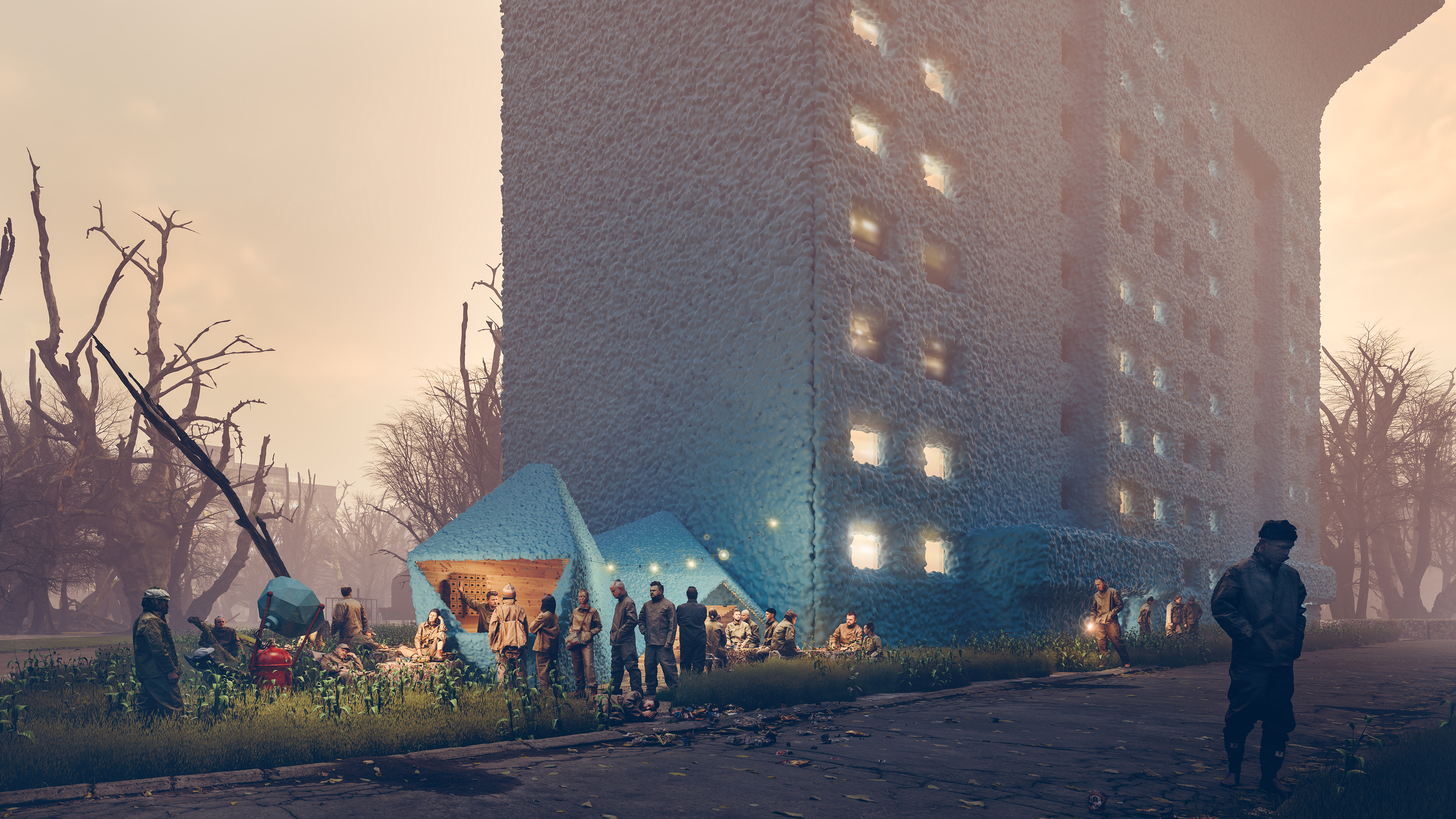
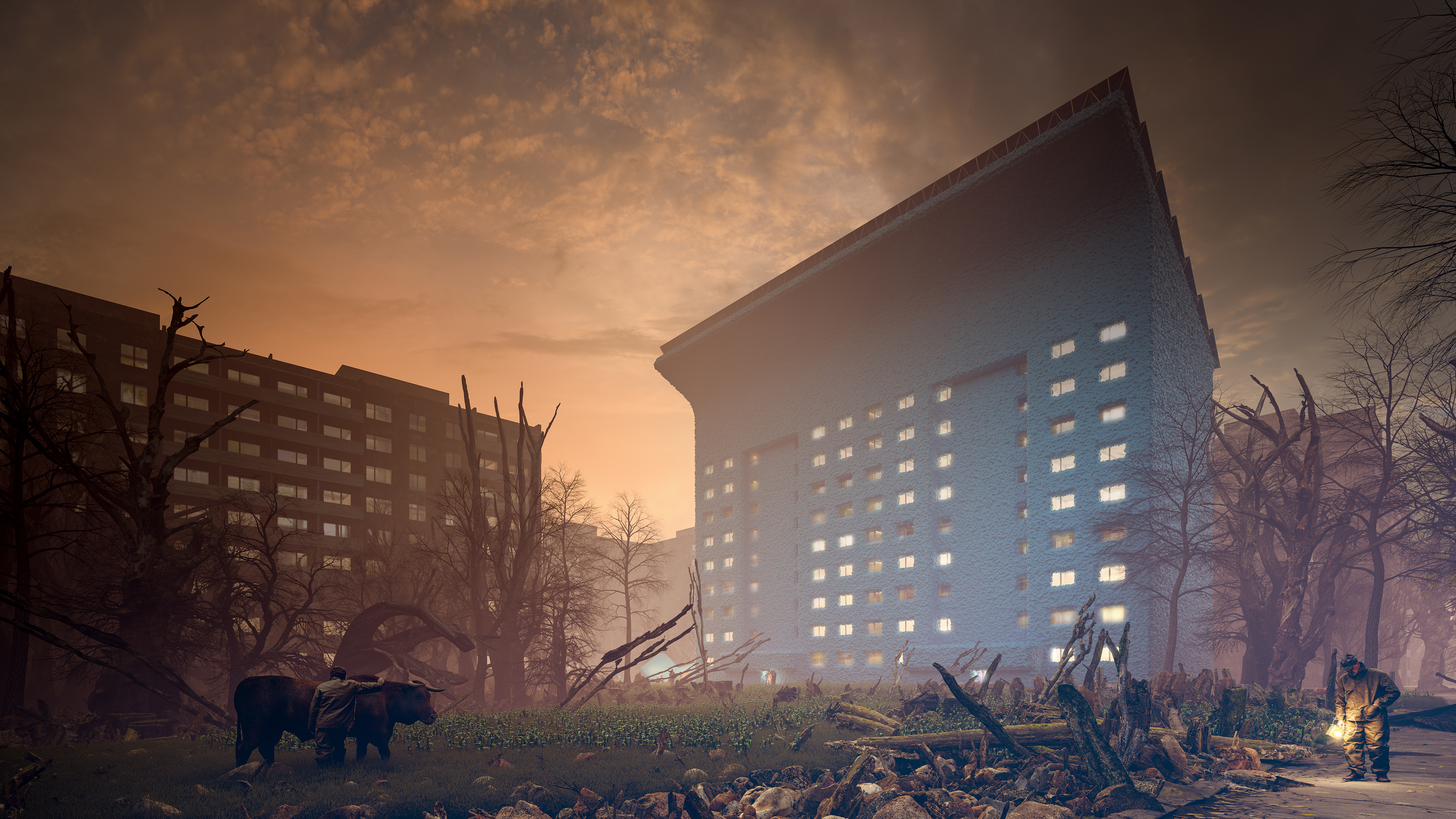

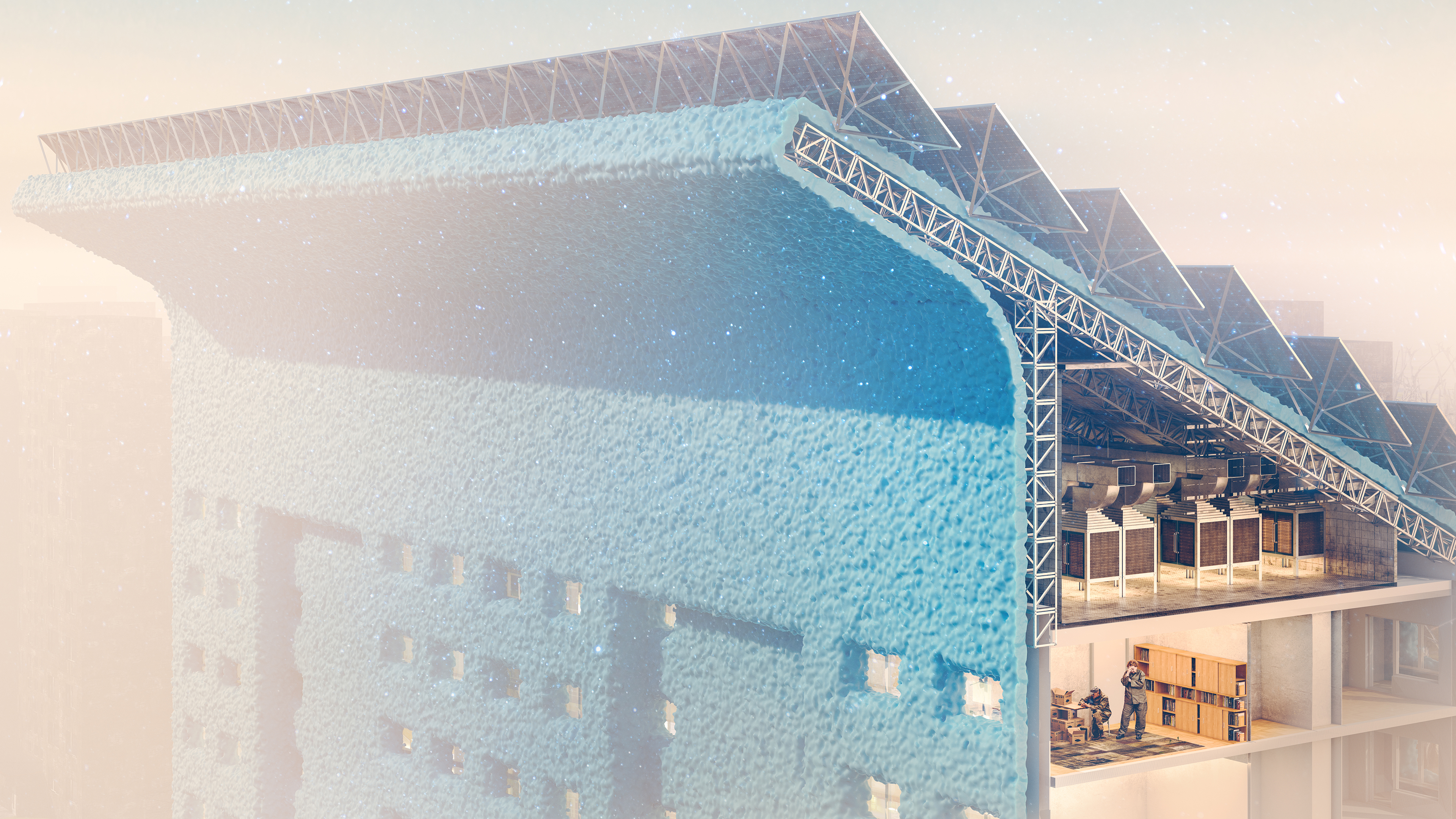
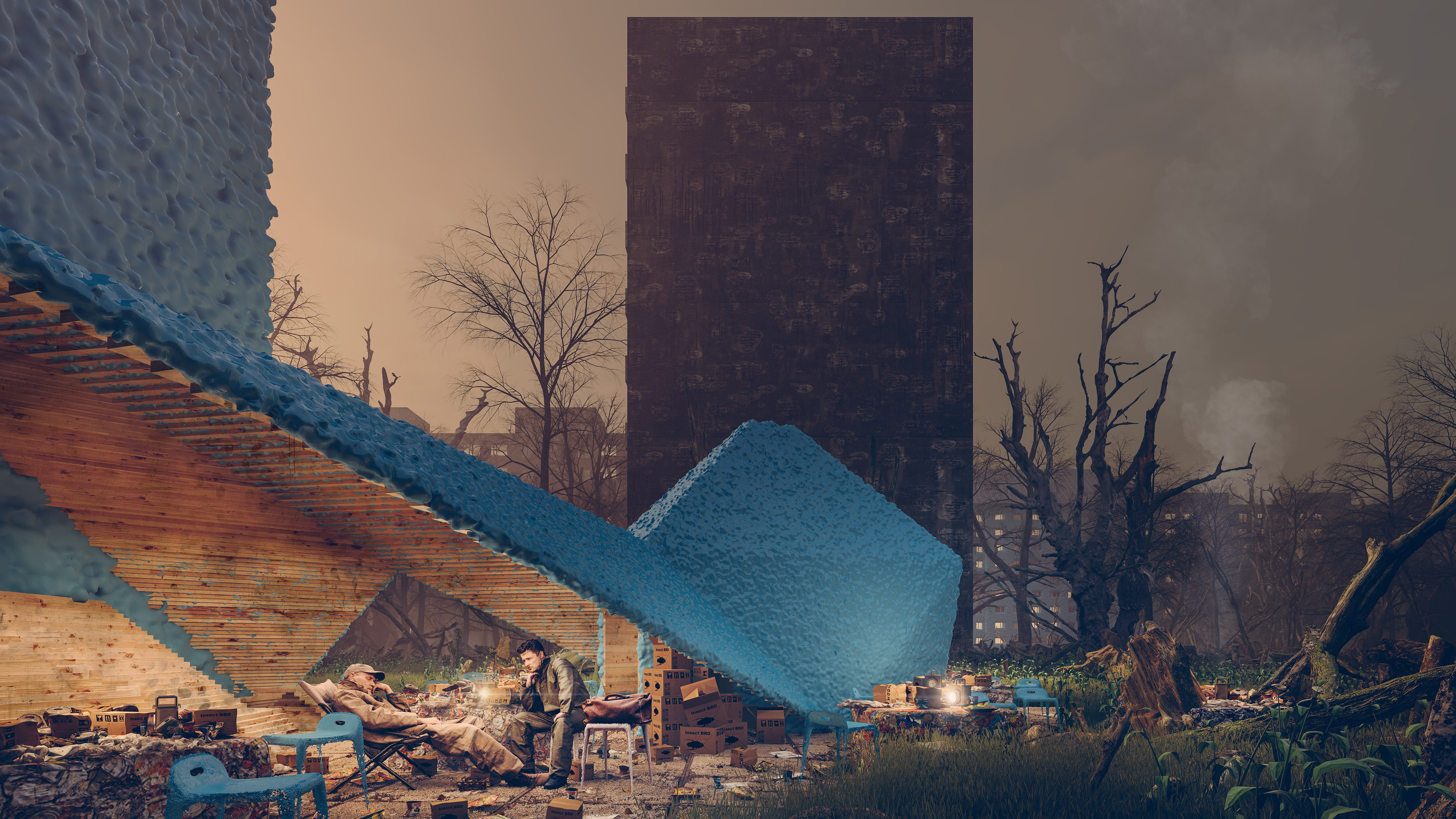
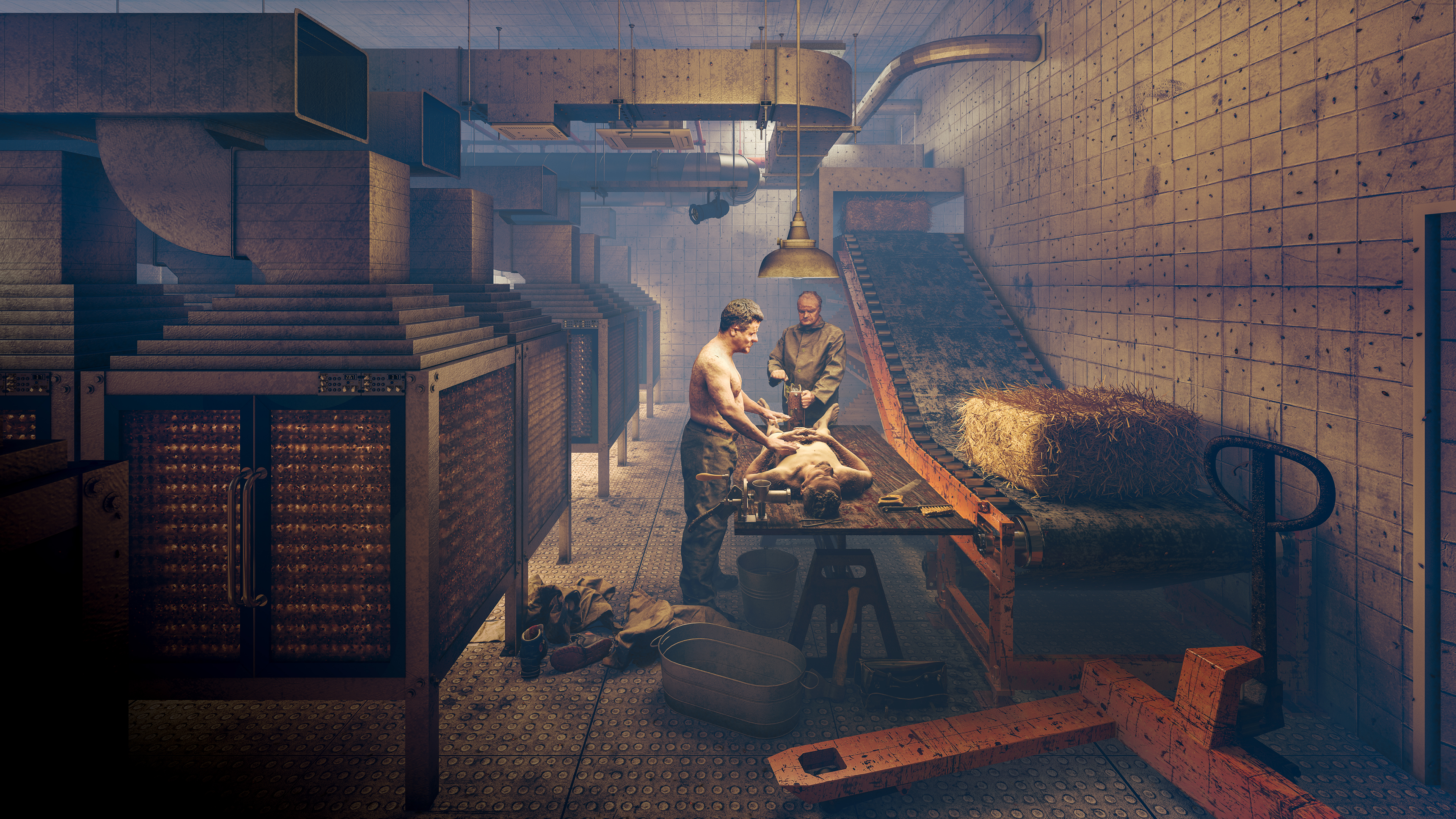
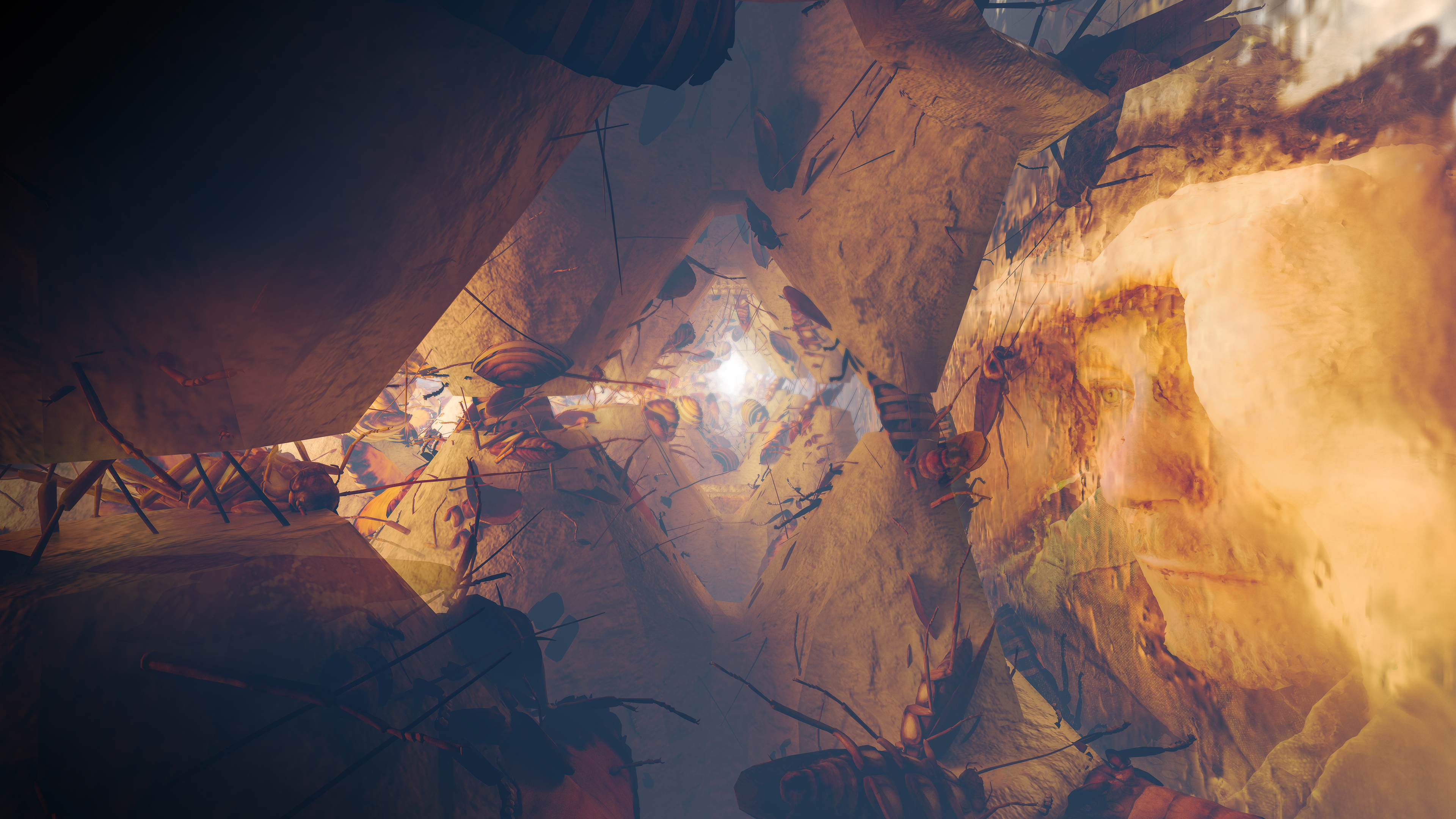
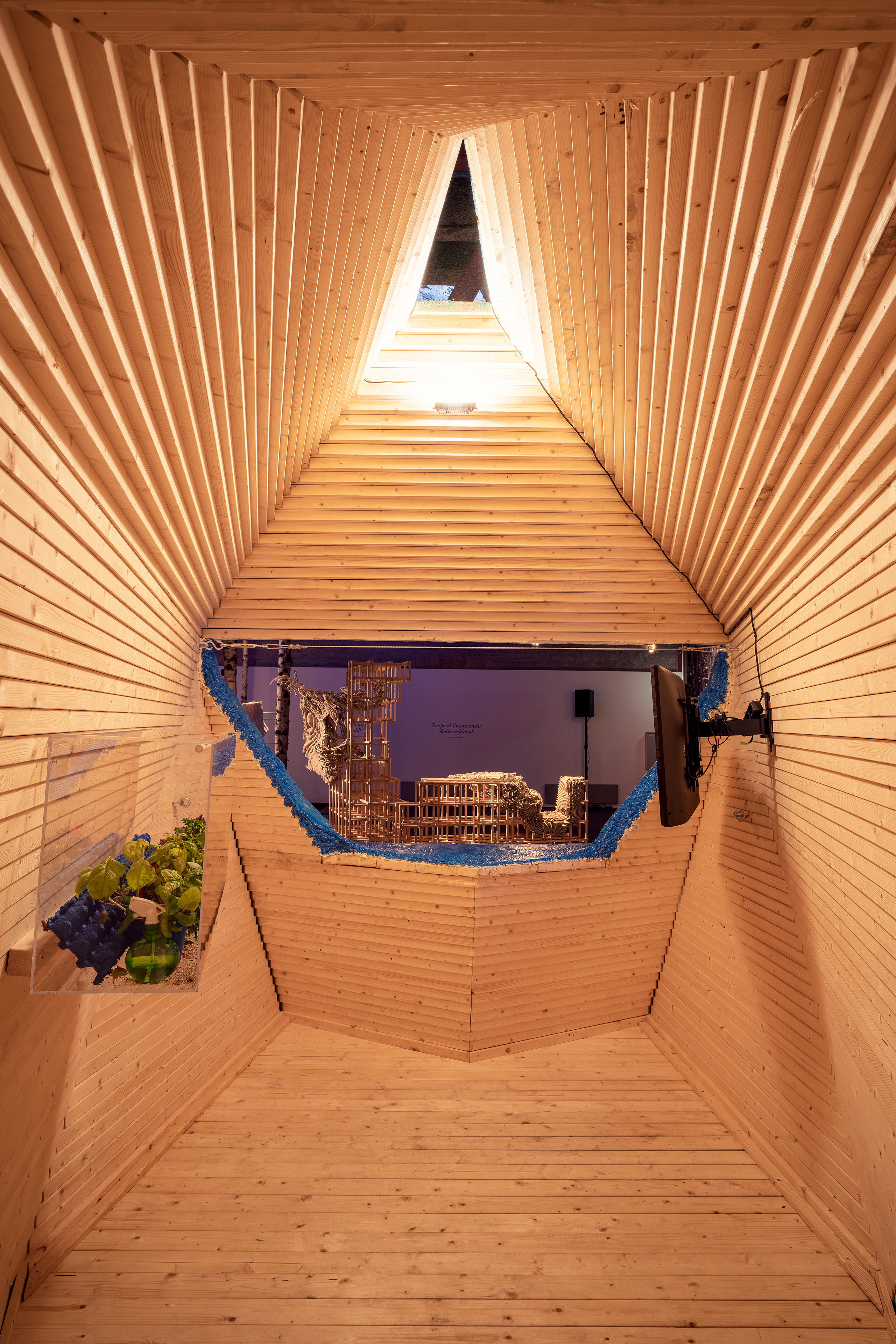
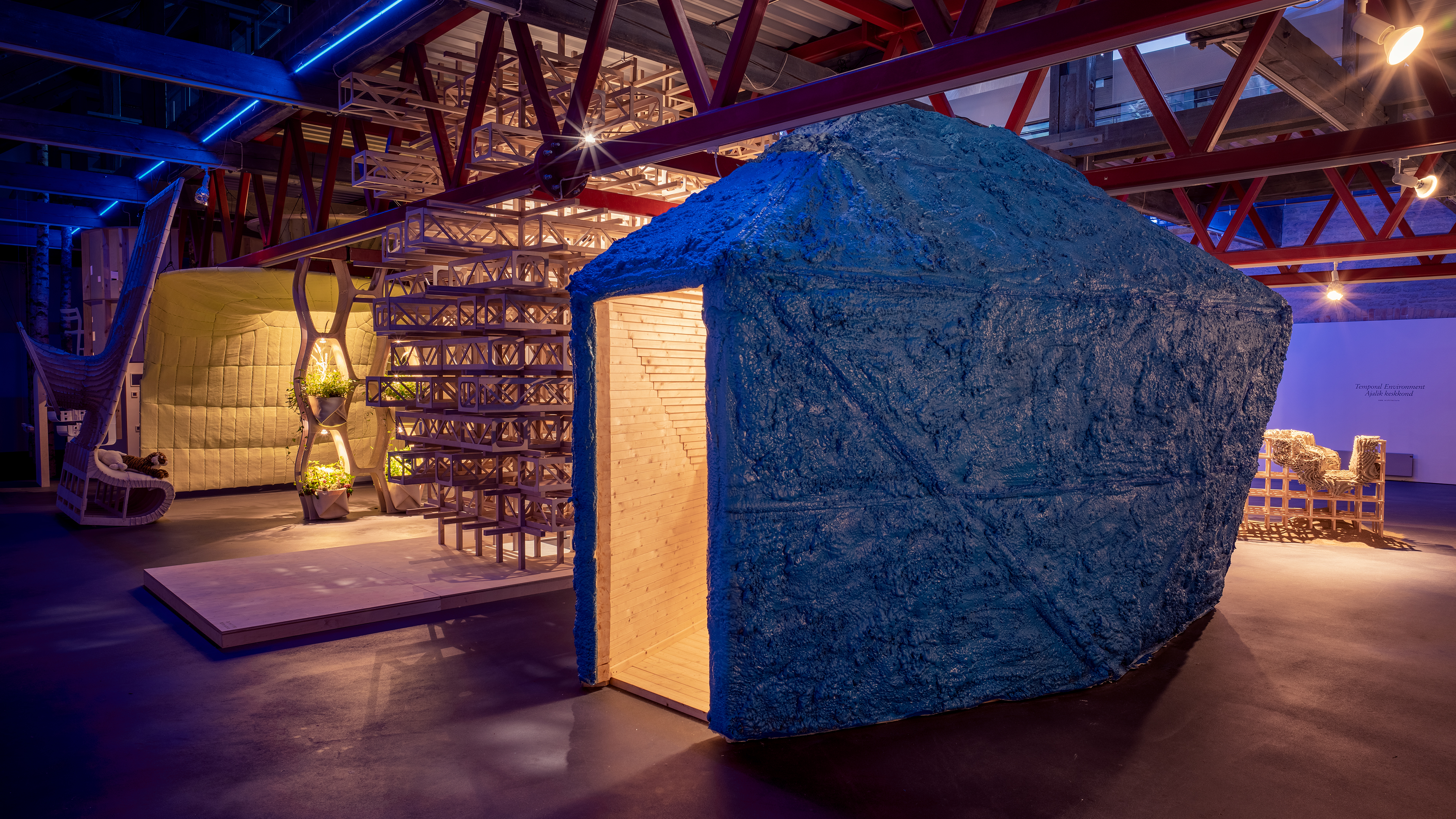


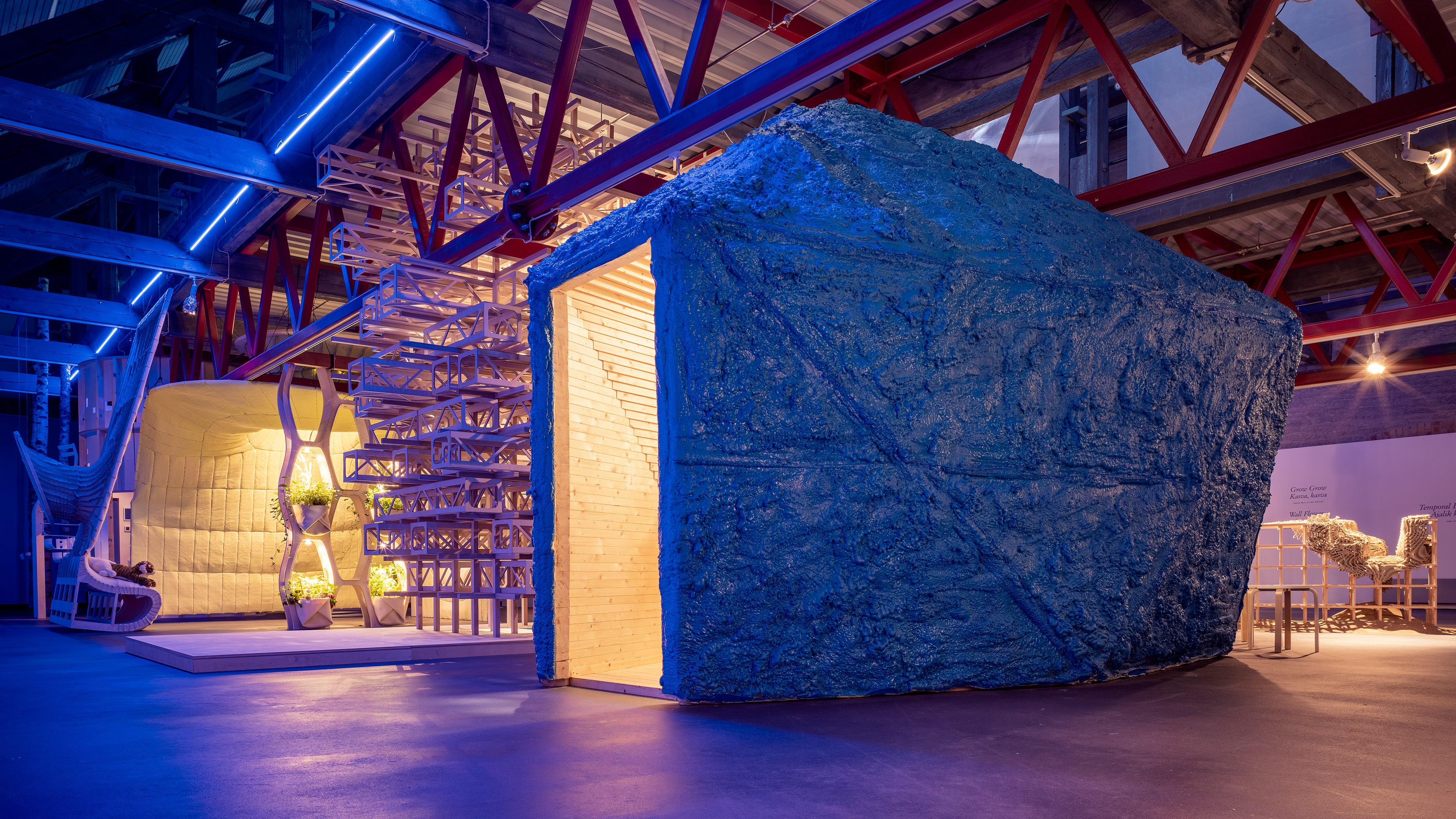
The Utopian Tick Summary:
Tick is an arachnid that latches upon warm-blooded animals. This parasite has attached itself to the beautiful modernist block. It is covered with sprayed insulation which has spread like an infection over the existing housing block. The installation is a happy reunion of at least 3 utopias - the utopia of modernist housing, the utopia of energy-efficient reconstruction and the utopia of vernacularity.
Today:
Large amount of inhabitants of cities, citizens, dwell in prefabricated housing blocks. The efficient production patterns of 20th century have disposed the prefab housing districts all over the world. However, the pre-fab housing districts are not considered beautiful environments. Huge amount of people live in conditions that are not considered beautiful.
Future:
Nobody knows what it will be like, what will be the wildcard of becoming, the catalyst of change. We can fabulate, we can elaborate a design task from the fabula, we can design and we can totally miss the target, the future as it would actually appear. Each one of those possible futures propose new forms which will be the vehicles of new beauty. We have suggested one possible form.
Setting:
The prefab housing districts in Tallinn lack functional diversity. The environment consists of dwellings and it has very little potential to house different activities. The specific site is a house in Lasnamäe, Mahtra 23 where Ott Kadarik lived from age 8-18 (1984-1995).
Fabula:
It is environmentally viable to consume our proteins from insects instead of mammals like pigs and cows. It used to be nice (beautiful) to eat veal and pork. It will be nice (beautiful) to eat insects. An insect farmer living in the 1st floor apartment will construct a retail space to sell meals to the local residents.
Form:
A tick has attached itself to the beautiful modernist block. It is covered with sprayed insulation which has spread like an infection over the existing housing block.
Influence:
The small bug affects the house, the dominant modernist order and the spatial surroundings, functionally and socially. It is an agent of beauty.
Beauty:
To make the pre-fab housing districts dwellable is a beautiful idea. The beauty of this idea will be contained in the resulting proposal. Improving energy-efficiency is an idea that does not necessarily produce beautiful results. But it adds to the beauty score. So does the attempt to expand the functional scope of the area by building space specially assigned for business activities at the same time activating public space. Things like that are beautiful due to their aim. And the sense of beauty is shared by multitudes not just the enlightened elite.
We can put huge effort into pursuit of beauty and we can fail. We can sometimes make beauty with no special attention paid to it. We can succeed in creating beauty and see it fade as new forms of beauty arise and suffocate the former one. We can see forms from the past atttain beauty as we start to look differently at them or if they become rare. The pre-fab housing districts are not considered beautiful environments. If we can change this with formal moves, we succeed as architects and as a society.
A Meeting Place for Multiple Utopias
A Utopia – a place with perfect conditions for everyone – has a strong inclination towards failure. However, as a society of dreamers, we continue to produce those ideal models and strive to build them up in reality. Our proposal of the Tick is a fictional point where several utopias meet. It is a happy colloquial meeting that tries to overcome the tensions each one of those utopias brings along.
Utopia of Modernist Housing
The idea to provide dignified conditions for habitation for each member of society was one of the strongest spatial pursuits of the 20th century. The prefabricated concrete elements to be assembled into most rational compounds that make up a machine-like living environment was supposed to redeem us from our obscure urges leading to war and oppression. There are some outstanding examples like Tiergarten in Berlin or Weissenhofsiedlung in Stuttgart but they tend to be mocked by the multiplied versions of the same principles elsewhere. The caricatured image of dignity represents usually poverty, decay and social segregation.
Utopia of Energy-Efficient Reconstruction
As huge amount of construction has been produced during times when energy-efficiency was not a major concern, we have a vast legacy of buildings that are very thirsty and hungry for heat and cooling. As a society we have elaborated the idea that by insulating the skin of the houses, we can reduce our ecological footprint. This is being done leaning on calculations by engineers and pressure from the construction industry. Being economically rational and at the same time preserving the planet is a dream that fuels this agenda. However, the materials might not be very ecological, the process of reconstruction might appear to be more resource-hungry than the savings from the outcome and the overall layout of urban pattern might eventually eat up all the possible profit from the act.
Utopia of Vernacularity
As opposed to the modernist prefab totality, the vernacular mode of space production stems from the common man, his urge to change the rigid conditions imposed upon him by a stronger order, be it nature or society. There is a yearning for this brutal creative force that can change everything and mould the reality matching his own face and thus making the world a better place for his peers. Architects keep looking for its appearances in the ghettos, the prefab districts, the regulated urban environments. The idea that by small steps we move to a brighter future that is customized to our individual faces helps us see the totalities as temporary structures bound to crumble under the creativity of man as a space-producing being.
Utopia of Beauty
Between the challenges and constraints of each situation, we are still free to find a little surplus – the extra that helps us see beauty in the circumstances, to maintain beauty around us and to create beauty for the emerging future. Whether this pursuit is cultural, social, individual, physiological or ontological, we are unaware. But we claim that it reconciles the contradictions and soothes the pain of living.
Living with All Those Utopias
Utopias do not normally converge. Each one tries to reach the end of its consequences and does so by oppressing all the others. Thus reality becomes a battlefield for utopias that attempt to beat each other. For a layman this battle need not be visible. We must lead our life with those utopias, in spite of those utopias, sometimes working with them, sometimes against them. We have to be dynamic and smart to pursue our own goals and to survive chaos and order that those bigger forces propose to us. Our Tick is an illustrative example of the conversation taking place between those utopias, with the initiative given to a creative citizen with a wild sense of beauty.
We see forms appear and disappear at infinite speed. We try to take stand-still shots of the continuously changing reality. We try to present those shots as nice and tidy. As if the captured beauty would redeem the wasting, abuse and violence that has been committed to acquire it. As if the apocalypse ahead would not be obvious and irreversibly approaching. As if our society was not just a form to appear and disappear. Look at the beauty with both eyes.
© Ott Kadarik
insta: @kodarik @luidrik @ktarchitects